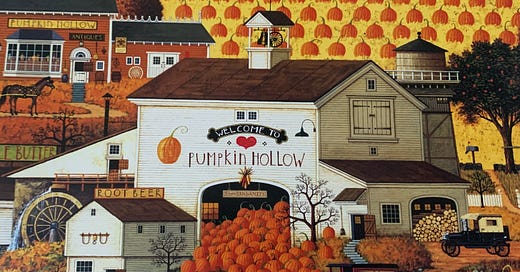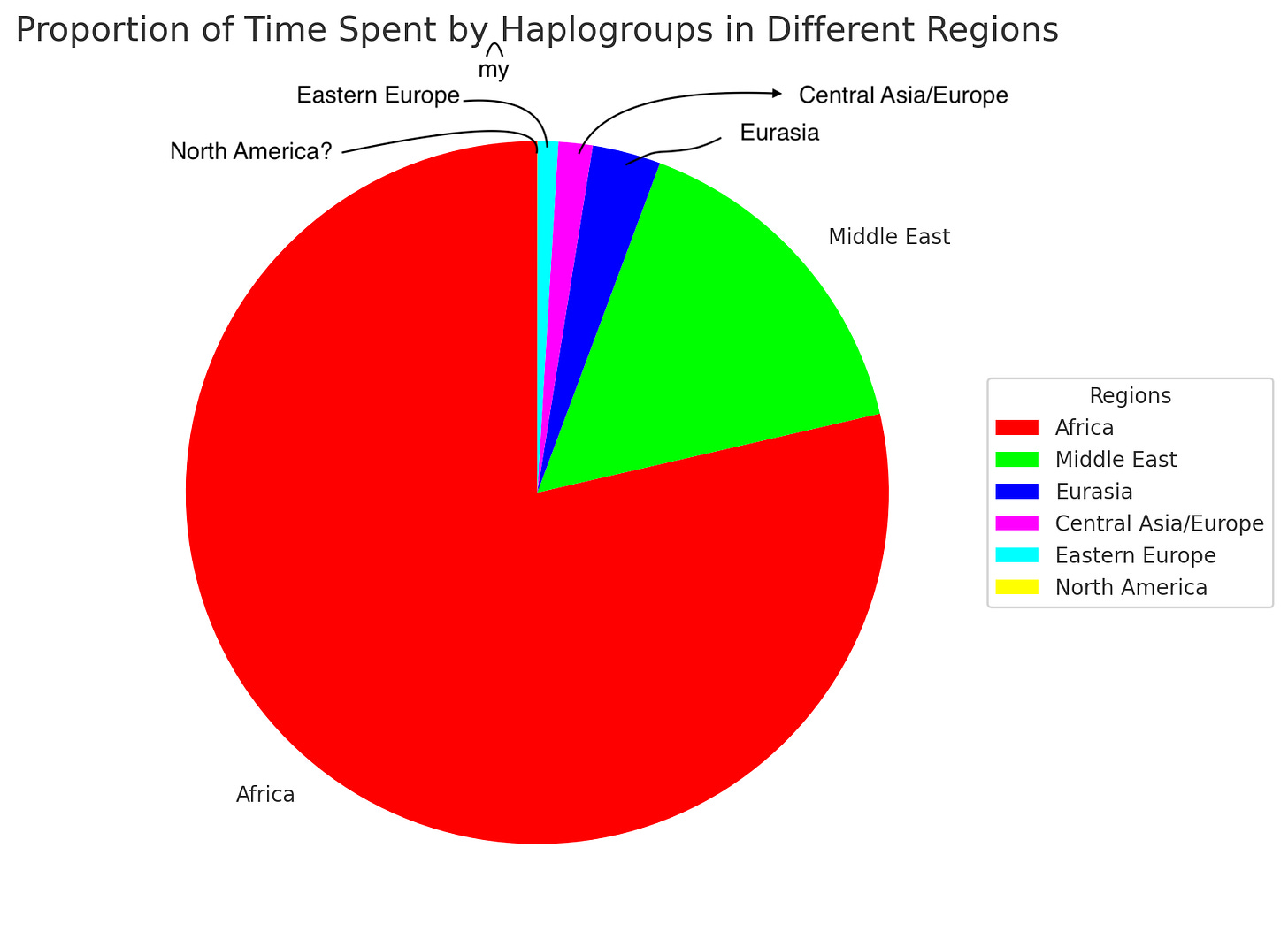October stirs my American nostalgia. I think of autumn leaves, tackle football, chicken noodle soup on a crisp day. I even miss the annoying things about America, like the pharmaceutical commercials. That’s because they all remind me of home.
But is America my home?
The answer is simple in my mind but complicated on paper. I have triple citizenship. I spent the first six years of my life in Canada and the last six in Scotland, where I now live. I’m not American by birth or residence, and only somewhat by heritage. (My father moved to the U.S. as a Scottish immigrant around 1990. My mother’s Polish ancestors moved to the U.S. about 100 years ago.)
Those roots are not insignificant, but I have no relatives who fought in the Revolutionary War. No family divisions during the Civil War. No tales of unforgiving westward journeys, nor stories of an enterprising Uncle Abner brewing moonshine down at the creek
Despite the triple citizenship, despite the relatively recent family settlement, I nevertheless feel fully American. The American Revolution is my story, as is that of the Civil War, manifest destiny, the world wars, and all the good and bad in between. I feel culturally American. Politically American. I feel kinship with some of my favorite American heroes: Washington, Thoreau, Grant, John Brown, the Roosevelts, Martin Luther King Jr., Michael Jordan. I feel as American as them. It doesn’t seem to matter — while all this American history was unfolding — that my European ancestors were probably fighting in bloody territorial wars or plowing Slavic soil. Through some alchemy of education and culture, America’s past has become my own.
It’s strange that 18th-century American history feels like mine even though my ancestors were on the other side of the ocean. It’s even stranger to feel American when I am 0 percent genetically American.
A few years ago, I did a 23andMe test to discover my ancestry. My results were not surprising. I was about 75% Eastern European and 25% British. (The 1% Jewish was the only surprise.)
To understand your genes’ larger journey, you have to look at your haplogroups. (A haplogroup is a genetic group that shares a common ancestor, which can help trace the movements and settlement of one’s ancestors.) My paternal haplogroup lived in Africa for 80% of the past 300,000 years. They spent another 16% in the Middle East, and a mere 2.5% in Europe. My roughly 30 years in the U.S. make up 0.01% of my haplogroup’s timeline. (Most Europeans and Euro-Americans will have haplogroups similar to mine.)
I’m sharing the details of my ancestral journey not to bore you but to make a broader point: we all come from someplace else, yet we manage to feel a deep connection to something socially constructed ("the nation"), to the point where we feel love or nostalgia for it. My Americanness is absurd in many ways, but real in the only way that matters: in feeling. It doesn’t matter if generations of my ancestors hunted across the Serengeti or hoed clods of dirt in Galatia. Home is where we grow up in our formative years. For me, home is Wheatfield, New York, USA.
Even more strangely, a lot of my nostalgia feels like anemoia, which is nostalgia for a time or place I’ve never known. My anemoia is rooted in New England: its Puritans, its Native Americans, its large wooden houses, quaint Main Streets, pumpkin harvests, and deciduous forests. These images aren’t entirely unrelated to my roots in Western New York, which is part of greater Yankeedom, but there’s something about New England apple orchards and Main Streets that draws my nostalgic gaze more than the suburban reality I grew up in.
When I browse American newspapers, my anemoia is awakened. I feel a connection to a past that wasn’t (but is culturally) my own. The Library of Congress’s “Chronicling America” lets you explore American newspapers from 1756. I searched for the first written mention of “Halloween,” which led me to The Wilmingtonian from Oct. 2, 1823:
“In this month is celebrated Halloween. But although this name is still retained among us, it is almost all that is practically known of it in this country, or at least in our part of it. Among the peasantry in the north of Scotland, this night was traditionally thought to be entirely under the dominion of faries, witches, &c. and in it were tested various method, of unravelling futurity, but chiefly the destiny of the young as to marriage.”
Or take this advertisement from a confectionery store in Albany, 1842.
These lines — about Halloween, about pyramids of cocoa nut, about soda water on hand — feel more familiar than foreign to me.
Perhaps the best American nostalgist is artist Charles Wysocki. My wife, aware of my nostalgic needs, bought me his book of illustrations, An American Celebration. I enjoyed it so much that I bought a Wysocki calendar.
I feed my nostalgia (or anemoia) because it evokes a sweet sorrow. The melancholy feels nice, the same way a sad movie or a good cry feels nice. Some, whose emotional pendulums swing low, must force-feel to feel alive.
I probably shouldn’t end his essay without acknowledging how my nostalgic America appears whitewashed of its sins. Perhaps that’s easier to do from the free states of Yankeedom than from the Deep South, but it bears mentioning that my little New England daydream had its witch burnings, its wars with Native Americans, and its destruction of ecosystems. We have Minutemen and the Underground Railroad, but we also have our Love Canals and Triangle Factory fires.
And yet, I believe it’s more than okay to enjoy a romantic nostalgia, a cozy nationalism, a positive patriotism (as long as we’re not too blinkered about the past). It’s okay to believe in an absurdity, whether that’s your nationhood (with your millimeter-deep roots) or the very concept of the nation as a unit of organization.
There’s something natural about having a local (and larger) tribal identity, so those who nitpick your nostalgia and shame you out of patriotism are no better than the religious zealots who would have you deny or repress your sexuality. Both are in the business of stifling natural instincts and causing psychological harm.
Maybe I’ve spoken in terms too general, too universal. And maybe there is something special about America and its way of evoking nostalgia. That’s because there is so much good to be drawn from the American story: the experiment in democracy, the gradual enfranchisement of people, the D-Days, the Space Landings, the Harriet Tubman’s and Jessies Owens’s. Forget the present. It’s the past that tells us that revolutionary change, for the good and betterment of all, is possible. And it’s in the future where we can imagine our nostalgic dreams renewed.
***
For paid subscribers, here are some of my favorite nostalgic photos from my travels…
Keep reading with a 7-day free trial
Subscribe to Out of the Wild with Ken Ilgunas to keep reading this post and get 7 days of free access to the full post archives.








